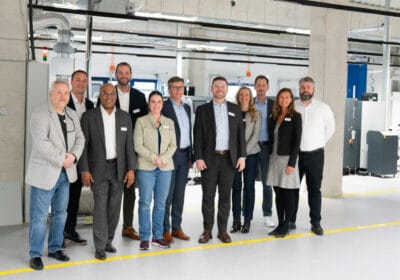In order to minimise the likelihood of food poisoning bacteria cross contaminating meat and associated products, ILAPAK has designed the very first full wash down horizontal form fill seal (HFFS) system. It is also the first machine of its kind to deliver a fully integrated and automated flow wrapper, belt feed and vacuum system from a single OEM.
Answering packer’s demands for an easy to clean, reduced maintenance vacuum meat sealing system, the Delta 6000 BM brings industry leading levels of product integrity to the busiest fresh meat factory and packing lines. By offering complete IP65k-rated protection, with full washdown capabilities, even of the sealing elements, it delivers peace of mind to meat processors and fulfils retailer hygiene mandates too.
Even though most meat packers and processors today prefer to pack in a vacuumed flow-wrap format to reduce the risk of spoilage and cross contamination, for large meat cuts ILAPAK’s engineers observed that many factories continued to buy in expensive pre-made shrink bags. The reason claims Tony McDonald, Director of Sales and Marketing at ILAPAK, is until now the options for vacuum packing whole hams, poultry, legs of lamb or beef joints from a rollstock were extremely limited.
If meat factories wanted to pack fresh cuts in a vacuumed flow wrap format, they usually had to buy three separate units – a flow wrapper, a multi-belt infeed and a vacuum system. In most instances these were supplied by three different OEMs, each with separate service contracts.
Tony continues: “Because these systems usually featured equipment that was bolted together, there were more recesses and areas where meat juices, food particles, water droplets and other contaminants could accumulate. Being a high protein food that’s particularly vulnerable to biological contamination, the risk of bacteria thriving was a high threat to product integrity and a meat processors reputation. What’s more, maintaining three separate machines meant any labour savings from automating meat vacuum packing were swiftly negated.”
Alternatively, the process was done manually, which Tony notes is far from ideal. “Processers today want equipment that is efficient and hygienic, and a reduction in manual handling. We are seeing a real drive across the meat industry to reduce manual intervention, as it introduces the risk of contamination. By reducing the number of product touchpoints you naturally cut the risk.”
With a top speed of 50 packs-per-minute, the fully automated HFFS unit presents a much more economic and hygienic alternative. The unit incorporates a full box motion sealing head for creating exceptionally strong hermetic seals that can easily withstand a vacuum cycle. And because the machine automatically cuts each pack size individually to each product’s dimensions, it is especially suited to lines running a selection of meat products of varying weights and dimensions.
Aside from reel film being a lower cost solution, the Delta 6000 BM can enhance retail shelf presentation with the vacuum process shrinking the film to fit the product. For added flexibility, film can be dispensed from the top or bottom of the machine. Bottom reel mountings aid manual handling of heavy 50kg rolls, whereas companies with high hygiene standards choose top level film holders where there’s no risk of floor splash.
Extending meat shelf life
In a recent WRAP report1, the fresh meat sector was identified as one of the largest producers of manufacturing waste, with meat, poultry and fish accounting for approx. 18% of the avoidable 870,000 tonnes that’s classed as manufacturing waste. Extending the shelf life of meat products by as little as a day could help to slash this avoidable waste bill considerably suggests Tony.
“Vacuum packing helps enormously to reduce meat waste, especially beef and lamb as it helps to prevent oxidation and spoilage,” highlights Tony. “Our Delta 6000 BM repeatably delivers a strong hermetic seal. Loss of vacuum as a result of poor seals tends to be the main source of leakers which speed up meat spoilage and affect product integrity,” he adds.
By isolating the electrical cabinet from the main frame of the system, ILAPAK has also removed the high risk item from potential damage during high pressured washdowns.








